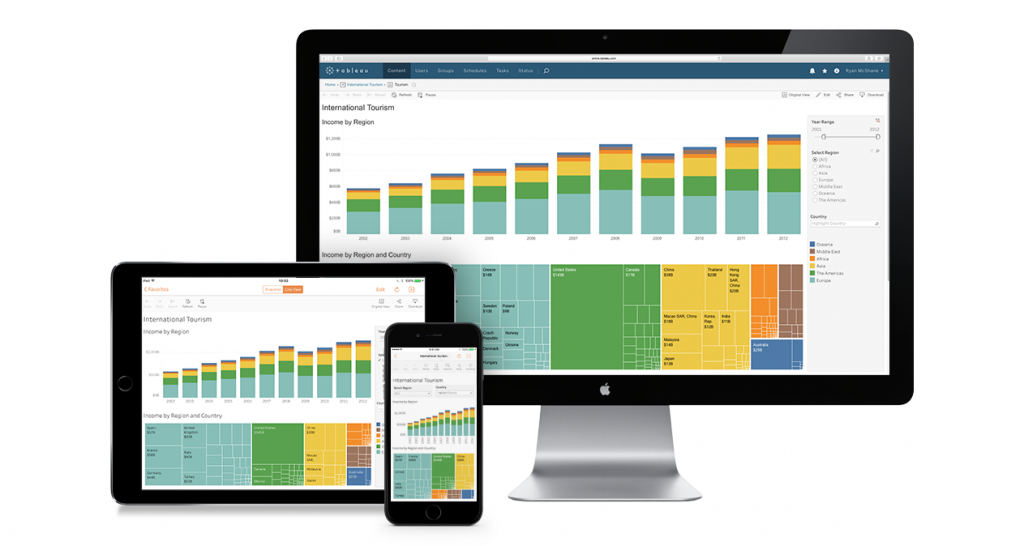
Tableau, a platform which specialises in visualisation software for analytics recently added a feature which uses natural language in its software. The feature called ‘Ask Data’, allows users to work with data by just conversing with the software.
What Is Ask Data?
Fully embedded into the Tableau server, Ask Data is currently available in the beta version of Tableau 2019.1. Powered by machine learning algorithms for NLP, its analytical capabilities get an obvious boost and may give other visualisation software providers a run for their money. It requires only the right data source without the need for any kind of setup.
With Ask Data, a user can ask questions of any published data source and get answers in the form of a visualisation. “It allows you the ability to explore data at the speed of thought”, says the company. It will empower users to have powerful insights and get quick answers to make better data-driven decisions. Ask Data also allows one to analyse the data with a simple statement or questions. It implements smart analytics as the technology behind Ask Data understands ambiguous or underspecified statements and resolves them by offering helpful recommendations and more.
In spite of all these developments, can Ask Data revolutionise business intelligence and visualisation? Here are the arguments:
Bringing In The AI game
Software development, in general, is getting an AI touch these days. Most software available today is looking into AI tech one way or the other. Be it in terms of face recognition or voice recognition, ML applications are growing. Tableau is no different here. The company is pacing up with AI getting into business intelligence tools today.
AI solutions make up processes much more efficient and easier. In an article by Peter Sayer of CIO, he highlights how analysts believe Tableau’s new language feature can help a long way in automating specialised tasks for data scientists.
Sayer says, “Data scientists spend up to 80 percent of their time on data preparation, she said (referring to Forrester analyst, Martha Bennett), and the less time they spend on it, the more they can spend on things that create value. One way around the time crunch is to hand over workloads to the machines. Another is to make it easier for people that couldn’t previously manipulate the data themselves to do so, the so-called democratization of data.”
Is Language At The Helm Of Better Understanding?
In his blog, Ruhaab Markas, Senior Product Manager, NLP at Tableau, illustrates how Ask Data has leaned on ML advancements to leverage language for visualisation. “Natural language can be difficult. For example, in the statement, ‘six-foot doctors came to the hospital’, it’s not clear if we’re talking about really tall doctors or podiatrists. Humans are adept at clarifying ambiguity and intent by understanding the context of a conversation, but machines face a more difficult challenge. Now, with advances in the field of natural language, machines can better handle pragmatics, deciphering context to better understand the meaning behind a statement.”
In fact, if visualisation software understands broken down queries, they might accurately grasp the context of what the user actually wants (just like Google Search but in terms of graphs, charts or other visualisation elements). Ultimately, visualisation tools have more to offer than lose when natural language is infused in its structure.
Aligning Best Practices
Markas also mentions how Ask Data goes a long way in aligning with best practices for data visualisation. For example, if the user works on a visualisation project, Ask Data recommends the right type of visualisation tool based on best practices.
Furthermore, Markas emphasises that the data can be driven towards more useful decisions by sharing insights and asking questions. All one has to do is save visualisations created as Tableau workbooks and share with Tableau users.
Outlook
Tableau’s latest offering will definitely attract more crowd. But, all depends on how well it tweaks its natural language features in visualisation as well as for BI. With rival software like Microsoft’s Power BI (it already has a feature called Q&A For Power BI, that uses language) and Qlik’s Qlikview racing up in the quest for implementing AI into their portfolio, it is essential that Tableau keeps up very well with Ask Data.

























